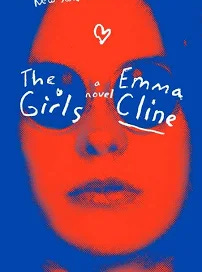5 Takeaways from Emma Cline's The Girls
Why the psychedelic renaissance shouldn't forget about Charlie Manson
Emma Cline’s novel The Girls, a fictionalized first-person account of hanging around Charles Manson’s psychedelic cult in the 1960s, bears eerie similarities to the dynamics and language of some contemporary psychedelic groups. When Danielle Evans recently recommended The Girls to me as a comparable title to my novel, I read Emma Cline’s version with absorbed horror. Not only were there disturbing similarities between the world Cline describes and the one surrounding The Shaman I knew, but to me the novel issues a clear warning about how psychedelics can be used to manipulate vulnerable seekers.
Reading The Girls underscored how much the psychedelic renaissance of today merely rehashes ideas and practices from the 1960s, which were themselves appropriations from an earlier time. People widely regard Manson, on whom the cult leader in Cline’s novel is based, with fascination, while insisting he was an outlier in psychedelics. But he doesn’t seem like one to me. When creeps get drugs and power they can’t resist using them to manipulate others, and many creeps who seek power are drawn to psychedelics. Frustrated by his unfruitful attempts to gain power in the real world, Manson used psychedelics to manipulate others to create a world where he could be worshipped. He created a narcissist’s dream come true, a version of the American Dream we can’t overlook or forget.
Here are some takeaways from The Girls regarding psychedelics and creeps:
1. Manson was sleeping with his adherents/students/people he purported to help. Many famous psychedelic facilitators, including The Shaman, sleep with their students. Looking back, the way women around The Shaman justified his behavior enrages me. The fact that he regularly made girlfriends of his students was elided or justified using New Age free love philosophy that encouraged ego dissolution and blurry boundaries, psychological phenomenon accelerated and intensified by psychedelics. Emma Cline shows her Manson-inspired character and the people around him doing the same in her novel. “The heart doesn’t own anything,” says one of the cult leader’s young lovers in The Girls. “That’s not what love is about.” The girls feel special because of their proximity to the Manson character, named Russell in the novel. He grooms his young victims using psychedelics and watered-down philosophy to destroy their boundaries. “I experienced the whole night as fated, me as the center of a singular drama,” one of the girls says of her first night alone with the cult leader. “But Russell had put me through a series of ritual tests. A touch on my back, a pulse of my hand. Little ways of breaking down boundaries.”
2. Manson had a type he preyed on, and they were psychologically vulnerable, just like many people seeking treatment for mental health symptoms in the psychedelic underground. Cline writes that the cult leader is good at “Attracting the thin, harried girls with partial college degrees and neglectful parents, girls with hellish bosses and dreams of nose jobs.” She depicts the narrator and the other young women in the novel as loners and outcasts. “Back then, I was so attuned to attention,” the narrator observes of her vulnerable psyche as a teenage girl. “I dressed to provoke love, tugging my neckline lower, settling a wistful stare on my face whenever I went out in public that implied many deep and promising thoughts…I waited to be told what was good about me. I wondered later if this was why there were so many more women than men at the ranch.”
3. Manson hustled people for money and then treated them as extra special clients, much like many psychedelic facilitators today. In fact, The Shaman is currently collecting donations for a church and Rick Doblin recently used the FDA’s rejection of his attempt to get MDMA legalized as an appeal to raise money. In Cline’s novel, Truth and love invocations are “especially potent to wealthy searchers,” the narrator observes. “Later I’d read about how Russell sought the famous and semifamous and hangers-on, people he could court and wring for resources, whose cars he could borrow and houses he could live in.”
4. Manson had a mythology repeated and embellished by his followers/wives who claimed he was unique, put him on a pedestal, and treated him like prophet: “You’ll love him,” one says to the narrator. “He’s not like anyone else. No bullshit. It’s like a natural high, being around him. Like the sun or something. That big and bright.” Just like The Shaman, people around him make the cult leader’s specialness seem like a fact. “The way those girls spoke of Russell was different, their worship more practical, with none of the playful, girlish longing I knew. Their certainty was unwavering, invoking Russell’s power and magic as thought it were as widely acknowleged as the moon’s tidal pull or the earth’s orbit.” Russell sees every part of a person, the girls say. They ascribe other powers to him, including receiving messages from animals, healing a man with his hands, and pulling rot out of people.
5. Cline depicts how psychedelics facilitate the cult leader’s manipulation. “It started making sense to me, what Russell was saying, in the drippy way things could make sense. How drugs patchworked simple, banal thoughts into phrases that seemed filled with importance. My glitchy adolescent brain was desperate for causalities, for conspiracies that drenched every word, every gesture, with meaning. I wanted Russell to be a genius.” When psychedelics enter the room, the facilitator need only make the gentlest suggestion for it to catch on. This gives the person with the drugs a great deal of power.



